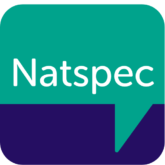View the Care Aims Intended Outcome Framework Summary.
Find out how to access further details about Care Aims.
Overview
Care Aims is increasingly being used as a model of care within NHS services, particularly by Allied Health Professionals. Developed by Kate Malcomess in 2005, it is a model of practice designed to support clinicians to demonstrate evidence-based practice through systematic reflection. Care Aims focuses on the impact and outcomes of care and requires clinicians to identify their main reason for intervening.
Purpose of tool
Care Aims helps determine if a goal for a single episode of care is achieved or not achieved: did what you predict would change, change?
It is described by Malcomess as a “philosophy that has proven to be extremely versatile and can be adapted to any practice context, team structure or professional group, a standardised way of capturing and communicating clinical reasoning” in addition to focusing on outcomes for clients. It is very much a model of practice rather than a sole outcome measure. Care Aims is a powerful framework for service improvement. It is a person-centred approach to provision based on the fundamental ethical principle that all public services have a duty to do the most good and least harm for the most number of people in the populations they serve, within the resources they have available.
It is a person-centred, rather than problem-centred, approach. It requires practitioners to ask, “Can I help change the impact of this problem on this person’s life, and am I the best person to offer this help?” rather than, “What is wrong and can I change the problem?” It promotes self-help and personal responsibility for the client. It prioritises clients for specialist intervention by considering the impact of a problem, disorder or situation and the risk of them not reaching their potential, not on the severity of their disorder.
Who is the tool for?
The Care Aims Framework is extremely versatile and can be adapted to any practice, context, team structure or professional group. It is designed for use within a multi-disciplinary team (MDT).
Notes on use
For some students, additional communication resources may be required to help them understand where they are and where they’d like to be and enable them to set their own goals.
As the tool is designed to support whole service development, it may prove difficult to use as a standalone measurement tool. However, there are situations where it works well. See examples provided by Seashell Trust.
Training
Training is essential. It is usually delivered as part of a whole service redesign for up to 30 people and cannot normally be booked for individuals. Fees are chargeable.
Further reading
An Audit of the Application of Care Aims across the South West Thames Region
